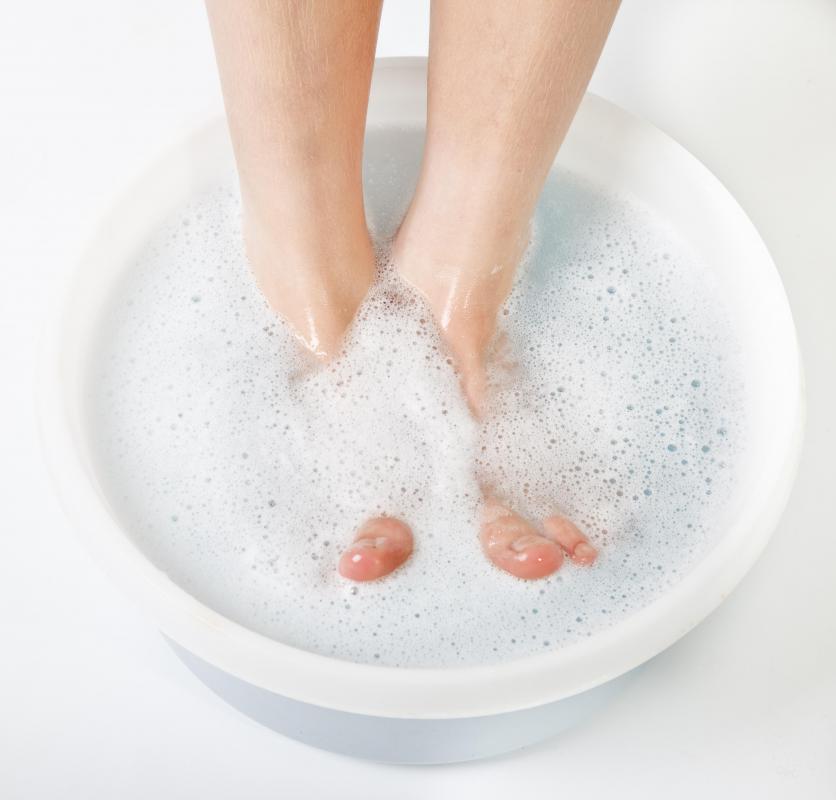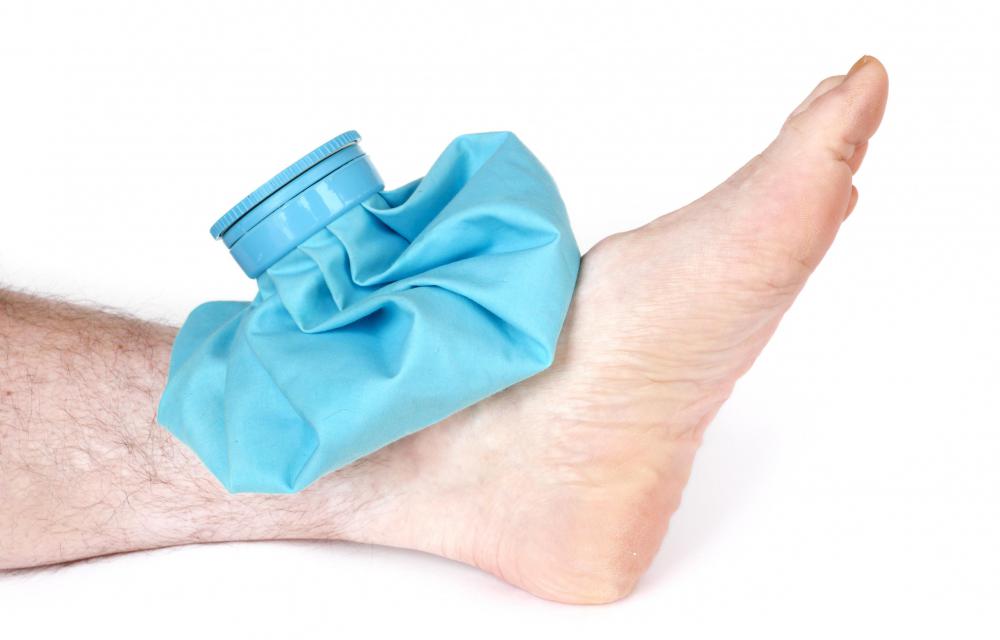At TheHealthBoard, we're committed to delivering accurate, trustworthy information. Our expert-authored content is rigorously fact-checked and sourced from credible authorities. Discover how we uphold the highest standards in providing you with reliable knowledge.
What are the Best Treatments for Foot Pain and Swelling?
The best treatments for foot pain and swelling depend upon what is causing it. Typically, medications that relieve inflammation and reduce pain are the treatment of choice. In addition, elevation of the foot improves circulation and can reduce pain and swelling. Applying ice to the foot often results in decreased swelling and discomfort. When using ice, the ice should either be placed in an ice bag, or wrapped in a soft cloth to prevent direct contact with skin.
Some conditions of the foot, such as tendinitis, can cause extreme pain upon movement and significant swelling. Although pain relievers are usually effective in relieving symptoms, the physician needs to be notified when pain is severe. Tendinitis refers to a condition where tendons become inflamed due to injury or overuse. It is commonly seen in the hands, but also occurs in the elbow and feet.

A foot bunion is a painful condition that causes the large bone on the side of the foot to protrude out. This condition can cause significant pain and pressure when wearing shoes that are too tight. Anti-inflammatory medications and ice application can significantly reduce pain and swelling, but sometimes surgery is required. Sometimes, injections of corticosteroids can relief pain and swelling, however, they can cause side effects such as local irritation or damage to surrounding tissues.

When foot pain and swelling are due to a stress fracture, the foot may need to be casted before it can heal. After the fracture heals, pain and swelling usually diminish. Sports creams and analgesic rubs can help the symptoms, however, their effects are usually only temporary, and they should not be used indefinitely. In addition, wrapping the foot in a pressure bandage after application of the ointment can sometimes provide additional relief and support to the painful foot.

In the absence of injury, the cause of these symptoms needs to be investigated. Sometimes swelling of the foot and ankle can be the result of poor circulation, heart disease, or kidney disease. The physician can order blood tests to determine kidney function, and he might recommend an ultrasound test to determine if the blood flow going to the foot is being impeded.

Although anti-inflammatory drugs can greatly improve symptoms of foot pain and swelling, they are not tolerated by everyone. Medications such as aspirin and ibuprofen can cause gastrointestinal symptoms such as stomach pain, abdominal cramping, and heartburn in certain people. For those who are intolerant of these medications, acetaminophen pain relievers can be a viable substitute. Although effective for pain relief, they do little to reduce swelling.
AS FEATURED ON:
AS FEATURED ON:
















Discussion Comments
@Ana1234 - It might actually be more that your feet are collecting fluid than actually being injured. That happens to me on very long flights or bus rides, when I can't move around very much.
It can actually be pretty dangerous if you aren't careful, since it makes it more likely that you're going to get a clot or something like that, so try not to let it happen. Drink plenty of water and do exercises, or even wear pressure bandages if you're in that kind of situation.
@Mor - If I have to be on my feet for most of the day I almost always end up with foot pain and swelling, even though there isn't really an injury. I've always worked an office job, so I'm not sure if my feet would eventually get used to it if I had to do it every day, but I definitely feel bad for people who work in jobs where they don't get to sit down.
For some reason it doesn't seem to bother my feet if I'm walking around and varying what I do during the day, but if I have to stand in one place then they swell up and get very tender.
My mother often gets cracks in her heels, which is extremely painful. It doesn't seem to matter if she moisturizes regularly or not and I guess it's just something that happens as you get older.
She's found that slathering Vaseline on them overnight tends to help with the heel pain and it helps her feet to heal more quickly.
I suspect it's because she has to walk a lot in her job, and she's just getting a bit too old for it.
Post your comments